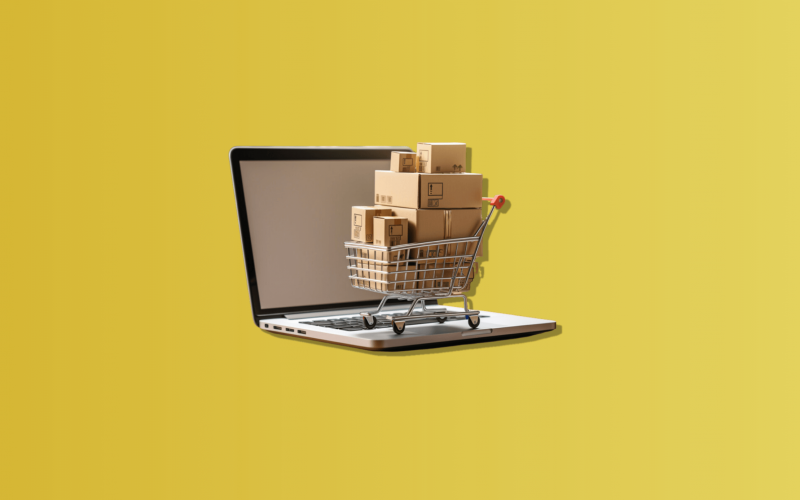Today, small business inventory software is available as never before. While store owners can do this all by themselves, there are a lot of inventory management software solutions for small businesses that can automate this process. However, finding the best one to pick may become an unnecessary challenge for constantly busy business people.
Therefore, our article aims to streamline this decision-making process. We will first explore the concept of inventory management, highlighting its significance and the essential features required in accounting software for effective inventory management. Subsequently, we will introduce the Synder inventory tracking app, emphasizing how it stands out as the ideal solution for perpetually busy small businesses.
Key takeaways:
- Inventory management involves tracking and organizing a business’s stock of products or materials.
- Automated inventory management offers advantages such as reducing unnecessary stock, lowering warehouse costs, improving order accuracy, and enhancing customer loyalty through consistently available goods.
- Effective inventory management software should provide features like instant syncing, forecasting, stock notifications, and bundle tracking.
- Techniques such as fine-tuning forecasting, using the FIFO approach, identifying low-turn stock, conducting regular audits, employing cloud-based software, and maintaining real-time visibility help small businesses optimize inventory operations.
Contents:
1. What is inventory management?
2. Why is inventory management so important?
3. Key functionality to look for
- Instant syncing
- Forecasting & reports
- Stock notifications
- Bundles tracking
- Accounting & inventory tracking
- Order management & inventory
- Integrations with the platforms and other software
4. Streamlining inventory counts with an inventory management app
5. Best techniques & practices
7. FAQs
What is inventory management?
Inventory management in accounting is all about keeping track of the stuff a business has. It’s like knowing what’s in your pantry at home but on a bigger scale for a business. This helps businesses know how much they have of each thing they sell, like products or materials. It’s important because it helps businesses keep their finances in order. They can see what’s selling well and what’s not, and it helps them make smart decisions about buying and selling stuff. Overall, small business inventory management is about keeping things organized so that businesses can run smoothly.
Why is inventory management so important?
Automating your business inventory planning can be an advantage in a constant struggle with your competitors. But the reason for making friends with specialized software isn’t only the digitalization trend around the SMB community but also a vital necessity already. Here are the most obvious pros of getting rid of manual inventory management:
- Reducing the funds “frozen” in unnecessary stocks.
- Decreasing your business warehouse costs such as rent, workers’ salaries, and variable costs.
- Improving your business order accuracy.
- Automating repetitive inventory tasks can free up your staff to focus on more strategic elements of their role.
- Integrating with other business tools: POS, accounting, CRM, and bookkeeping.
- Ramping up your customers’ loyalty with favorite goods always in stock.
Key functionality to look for
When it comes to inventory management software for your business, there are many different features and functions that you need to keep in mind. The basic function of inventory management is tracking the quantity and location of your goods. And that’s precisely what a good inventory system does. This inventory system keeps track of everything in your business and tells you where to find it when you need it. But that’s just the beginning of all that inventory automation can offer.
Understanding how important an inventory management system is for your retail business will help you choose the right one. So let’s take a closer look at some key features of an effective inventory management system!

🔗 Instant syncing
When you have many products, keeping track of your product’s whole journey is a Herculean task. You need to record each and every unit of product, its selling price, current stock, shipment details, and so on. This can be a time-consuming process when you’re dealing with hundreds or even thousands of products manually without any inventory management system. Good inventory software will do the calculation for the businesses automatically, providing you with up-to-date information about:
- what’s going on in your stock,
- tracking their movement,
- and deducting the sold amounts.
🔮 Forecasting & reports
Forecasting helps businesses understand:
- how much they need to produce,
- when they need to produce it,
- and where they should store it so that they never run out.
On the other hand, proper business reporting about the inventory on hand provides you with insightful data. This data plays a crucial role in the long run since you can create special business strategies based on the top-selling products, purchase frequency, and more.
Here’s an example of what these reports might look like in Business Insights reports.
📉 Report 1.
For ecommerce stores, identifying your top-selling products is crucial for having continued success. By pinpointing which items are generating the highest gross income, you can begin to diversify product offerings and forecast demand for your best sellers.
The Top Performing Products Report provides this essential information automatically by tracking and sorting your products by gross income. Take a look at the snapshot how this report looks like.

📉 Report 2.
Most ecommerce store owners spend most of their time focused on top-selling products and driving lead conversion. However, there are opportunities to drive sales and profit growth by improving lower-performing products. Here is a snapshot of the Least Performing Products Report.

Get actionable insights to grow your business and make informed decisions – create a free account.
📯 Stock notifications
When you have multiple locations, it’s important to stay on top of your inventory. You need to know when your business is running low on stock so that you can reorder in time to avoid running out and inconveniencing customers.
Some inventory management software provides its users with special notifications and alerts to signify when a business product has hit its pre-defined reorder point and needs replenishing.
📦 Bundles tracking
When selling products, one of the most effective ways to create sales, drive revenue, and also sell the slow-moving stock is bundling products together. To create good bundles, you need to have accurate data on your sales, inventory stock, and purchase frequency.
Synders’ Business Insights can provide you with all the necessary information about your business’s performance. Based on the activity of the connected store, software gives you an accurate report about the products most likely to be purchased together, and you’ve already got your bundle!

What’s more, you can make product bundles by putting together your top- and least-performing products. This way, you can increase the purchase of your slow-moving items and even save on the shipping cost.
📊 Accounting & inventory tracking
Making sure that your inventory and the accounting work seamlessly together is key. Maintaining regulatory compliance is also a critical concern for businesses, and the integration of accounting and inventory management systems plays a significant role in this respect.
Accurate tracking and valuation of inventory are essential for financial reporting and tax filing. An integrated system ensures that these aspects are always in alignment, enabling businesses to uphold compliance with accounting standards and tax laws.
The system ensures that all inventory transactions are accurately reflected in financial statements, reducing the risk of discrepancies and subsequent regulatory issues.
Note: Keep in mind that accounting software works best in the hands of a professional accountant.
Browse our CPA directory to find accounting experts with ease.
🛒Order management & inventory
One significant advantage of having integrated order and inventory management systems is the ability to have real-time inventory updates. Whenever a customer places an order, the inventory level is automatically adjusted, reflecting the new state of stock accurately. This immediate update helps to mitigate the risk of overselling products, a common problem that can negatively impact customer relationships and business reputation.
Integration of order and inventory management also leads to more efficient replenishment procedures. The system makes it easy to monitor stock levels continuously and can automate the reordering process based on predetermined thresholds. When inventory falls below these set points, a new order can be triggered automatically, ensuring stock is always maintained at optimal levels. This efficiency helps prevent stockouts and supports continuous, uninterrupted service to customers.
🤝 Integrations with the platforms & other software
We’ve already reviewed two of the most crucial types of integration (order management and accounting) for inventory systems. Here are other types of integrations:
- Supply chain management systems;
- Warehouse management systems;
- Point of Sale (POS) systems;
- Ecommerce platforms;
- Customer Relationship Management (CRM) systems.
What about other software?
This all points to one conclusion—to get the most detailed information about your business’s position, you need all your platforms to communicate with each other. Don’t you agree?
For instance, you can use Synder Sync and take advantage of its automated categorization feature. Imagine the connection between the Shopify business store and QuickBooks Online.
Sounds pretty promising, doesn’t it? In the following sections we will take a closer look at the functionality of Synder.
Wrapping up, there are many must-have functionalities that any good inventory management system needs. But since there’s such a wealth of options available, you shouldn’t limit yourself just to the basics. Explore your business needs and see what advanced features or integrations will best help you reach your goals.
Streamlining inventory counts with an inventory management app
Streamlining inventory counts has become effortless with the introduction of innovative inventory management/tracking apps. These applications utilize cutting-edge technology to simplify the complex task of keeping track of stock levels.
By seamlessly integrating with existing systems and providing real time updates, businesses can efficiently monitor their inventory, anticipate demand, and minimize the risk of stockouts or overstocking.
With time-saving features such as barcode scanning, automated alerts for low stock levels, and customizable reporting, these apps empower businesses to optimize their inventory management processes. Thus, they ultimately save time and resources while enhancing overall operational efficiency.
Efficient inventory information management with Synder
Time is a crucial factor in managing information about small business inventory, and it can significantly impact efficiency and profitability. Synder software offers a streamlined solution, saving valuable time for small business owners by automating monotonous inventory tracking processes. Compared to other services, Synder isn’t just narrowly focused on inventory software; it offers something more—financial management software—and provides a helpful selection of inventory tracking features. Here’s a list of Synder’s top features.
⚙️ Automated data sync
One of the primary time-saving features of Synder software is its automated data synchronization capabilities. Instead of manually inputting inventory data from various sources, such as sales platforms and payment gateways, Synder seamlessly integrates with these systems, automatically importing the data from the sales platforms and assigning the correct product to sales, ensuring your accounting software inventory is accurate and up to date. This eliminates the need for manual data entry, saving small business owners countless hours of laborious work.
📊 Inventory tracking across multiple platforms
Selling on multiple platforms and marketplaces calls for an integrated system that is able to track the stock levels across all your channels. Synder is a finance management software that does indeed support 30+ integrations with payment platforms & accounting software.
It offers robust inventory tracking features for ecommerce sellers. As the software with the largest number of ecommerce, post of sales (POS), and payment processor integrations on the market, it’s a trusted partner for many ecommerce businesses, automating data syncing for QuickBooks and Xero users.
📈 Synder Insights
Moreover, Synder’s reporting functionalities provide small business owners with valuable real-time insights into their inventory trends and performance over time. You can quickly analyze sales patterns, identify top-selling products, and forecast future inventory needs by generating customizable reports with just a few clicks. This data-driven approach saves time and empowers small business owners to make informed decisions that drive growth and profitability.
⚠️ Low stock alerts
With Synder, you have more freedom to customize your bookkeeping based on secure if-then conditions, creating low stock alerts. Using smart rules, you can set up automatic emails for stock levels that will get triggered once they fall below your preselected threshold.
🎁 Bundles syncing
Having accurate records in your books regarding bundles is important when you run a business where such offers are the norm. Synder lets you automatically record your bundles’ sales and reflect that in your stock.
🛒 Inventory tracking channel customization
Using Synder Smart Rules, you can categorize transactions from various channels into different accounts based on location, product name, and more to track inventory for different sales channels separately.
Take advantage of the opportunity to optimize your business processes and explore Synder features with a free trial.
🚀 Synder’s exceptional support
Synder software goes beyond basic inventory management by offering exceptional customer support to small businesses. With a dedicated team of experts ready to assist at every step, you can rely on prompt assistance for any inquiries. Whether it’s providing guidance on utilizing advanced features like Smart Rules or Synder Insights or offering educational sessions, Synder’s support team is committed to ensuring a seamless experience for everyone.
Learn more about the benefits of Synder and track your inventory safely. Book your seat on Synder’s Weekly Public Demo to gain more insights and tips.
Synder software offers small businesses a comprehensive inventory management solution that saves time and enhances efficiency, accuracy, and profitability. By automating tedious tasks, providing valuable insights, and offering a set of time-saving features such as bundle processing and Synder Insights reporting, Synder empowers small business owners to focus their time and energy on growing their businesses rather than getting bogged down by manual inventory management processes.
Best techniques & practices
When it comes to managing inventory, small businesses can adopt various techniques to streamline operations and enhance efficiency. Here are some tried-and-tested practices commonly employed by small businesses.

1. Fine-tune your forecasting
Predicting demand for your products is crucial for maintaining optimal inventory levels. By analyzing past sales data and market trends, you can better anticipate future demand and adjust your inventory accordingly.
2. Use the FIFO approach
FIFO, or First-In-First-Out, is a method where older inventory is sold before newer inventory. This helps prevent spoilage or obsolescence of goods and ensures that your inventory remains fresh.
3. Identify low-turn stock
Identify items that are slow-moving or have low turnover rates. These items tie up valuable space and capital, so consider discounting or liquidating them to free up resources for faster-selling products.
4. Audit your stock
Regularly conduct physical stock counts to verify the accuracy of your inventory records. This helps identify discrepancies and ensures that your inventory levels are accurate.
5. Use cloud-based inventory management software
Investing in cloud-based inventory management software can streamline your inventory processes, allowing you to track stock levels, manage orders, and generate reports more efficiently.
6. Track your stock levels at all times
Maintain real-time visibility of your inventory levels to prevent stockouts or overstocking. This enables you to fulfill customer orders promptly and minimize carrying costs.
7. Reduce equipment repair times
Minimize downtime by promptly addressing equipment breakdowns or maintenance issues. This ensures uninterrupted operations and prevents delays in fulfilling customer orders.
8. Don’t forget quality control
Prioritize quality control measures to ensure that the products in your inventory meet customer expectations. This helps prevent returns, refunds, and reputational damage to your business.
9. Hire a stock controller
Consider assigning a dedicated staff member or team to oversee inventory management tasks. A stock controller can coordinate inventory activities, implement best practices, and optimize inventory turnover.
10. Remember your ABCs
Classify your inventory items based on their importance and value using the ABC analysis method. This allows you to prioritize resources and focus on managing high-value items more effectively.
By implementing these inventory management techniques and best practices, small businesses can enhance their operational efficiency, reduce costs, and better meet customer demands.
Closing thoughts
Integrating software can be a headache for overloaded business owners. And an inventory control system won’t be an exception. Inventory planning is the backbone of any thriving retail business. Inventory management software is where you need to focus your energy to get this job done.
Apart from great features that meet your needs well, choose the solution that offers the best support, the easiest onboarding, and has a wide user community behind it. Keep in mind not only the features you need right now but those that you’ll need a few years later. Having an entire management system transferred to a new provider will be harder than ensuring that the chosen software is able to meet your needs as you grow your business.
FAQs
1. How do small businesses handle their inventory?
Small businesses manage their inventory by employing various techniques such as forecasting demand, using smal business inventory management software, conducting regular stock audits, and optimizing inventory turnover.
2. What is the best inventory method for a small business?
The best inventory method for a small business depends on factors like industry, product type, and sales volume. Common methods include FIFO (First-In-First-Out) and JIT (Just-In-Time) inventory management.
3. Which inventory system is best for small business?
Small businesses often benefit from using cloud-based inventory management systems due to their scalability, accessibility, and cost-effectiveness. These systems offer features like real-time tracking, order management, and reporting.
4. What are the 4 types of inventory management system?
The four main types of inventory management systems are periodic inventory systems, perpetual inventory systems, barcode systems, and RFID (Radio Frequency Identification) systems.
5. Can I use Excel to manage inventory?
Yes, Excel can be used to manage inventory for small businesses with basic inventory needs. However, as the business grows, dedicated small business inventory management software may offer more advanced features and scalability.
6. How much should a small business spend on inventory?
The amount a small business should spend on inventory varies depending on factors like industry norms, sales projections, and cash flow. It’s essential to strike a balance between maintaining adequate inventory levels and managing costs effectively.
7. Which inventory method gives highest profit?
The inventory method that gives the highest profit depends on factors such as pricing strategy, demand fluctuations, and cost structure. Generally, methods like FIFO (First-In-First-Out) can result in higher profits during periods of rising prices.
8. What is the best inventory model?
The best inventory model for a small business depends on its specific needs and circumstances. Common inventory models include Economic Order Quantity (EOQ), Just-In-Time (JIT), and ABC analysis, each offering unique benefits for small business inventory management.







.png)

Thanks for simplifying the complex world of inventory management. The inclusion of user-friendly options is especially appreciated.
Hi Jenny, thank you so much! We are very glad you enjoyed our article.
Very good Inventory management defining.